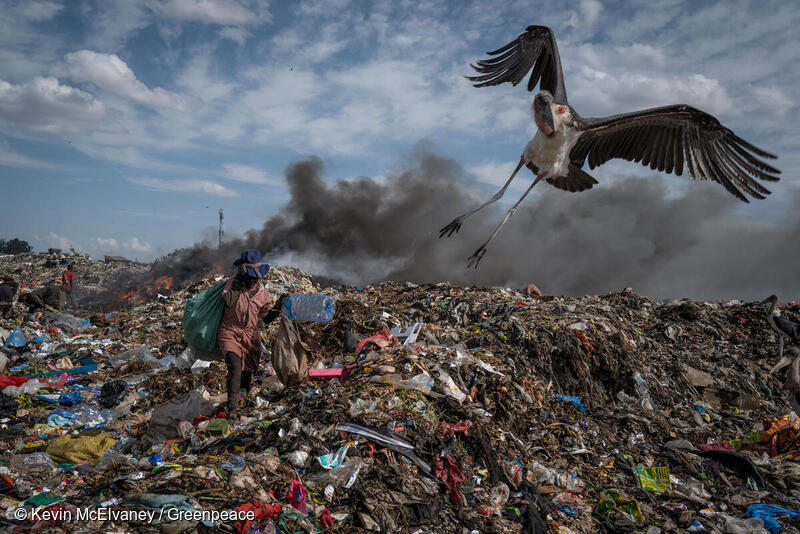I spent about 3 weeks on our Esperanza, which is the largest vessel in the Greenpeace fleet, at 72 metres in length. Her name, Esperanza is Spanish for “hope” and is the first Greenpeace ship to be named by Greenpeace supporters. And so she carries with her all of our hopes for the future of our beautiful oceans.
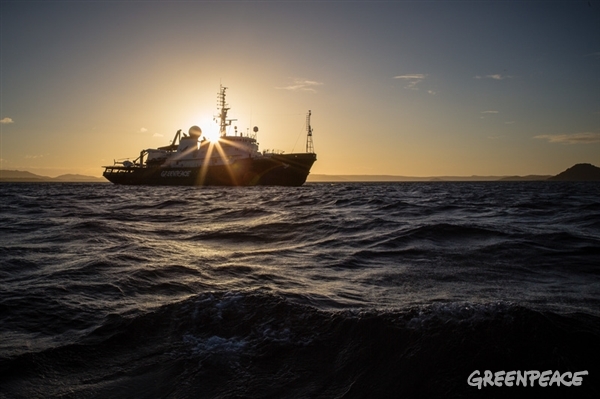
As our oceans are been stripped of life at an alarming rate. Here in the Indian Ocean, the tuna industry is ripping life from the ocean under the guise of fishing for a tuna catch. I witnessed first hand the destructive fishing methods that the out of control tuna industry use. My mission as the campaign volunteer for this expedition was to help spot and recover FADs that used by French and Spanish fleets to supply Thai Union with tuna. Thai Union is the world’s largest canned tuna company, who supplying cat food companies like Mars, owner of Whiskas, who are also linked to human rights and labour abuses.
You may ask what are FADs? Well FADs is an abbreviation for ‘fish aggregating devices’ which are fish magnets that attract enormous amount of tuna. But, as I witnessed not just tuna! they also attract barnacles and mussels, crabs, which then attracts small fish, big fish and sharks until a whole ecosystem forms. Tuna fishing boats use massive purse seine nets to scoop up the FADs and everything underneath them. Although they mainly target tuna, one can imagine how many other sea creatures, including baby tuna, sharks and sea turtles, are caught then dumped overboard – dead or dying. It is no wonder that some tuna stocks in the Indian Ocean, such as Yellowfin, on the brink of collapse due to overfishing. The aim of the expedition was to document this destructive fishing methods and, for the first time ever, to pull as many as we could out of the ocean.
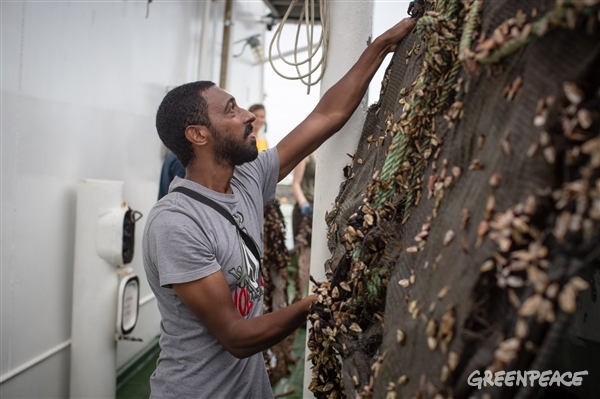
Delwyn Unloading a FAD from a rhib onto the ship’s heli-deck for dismantling
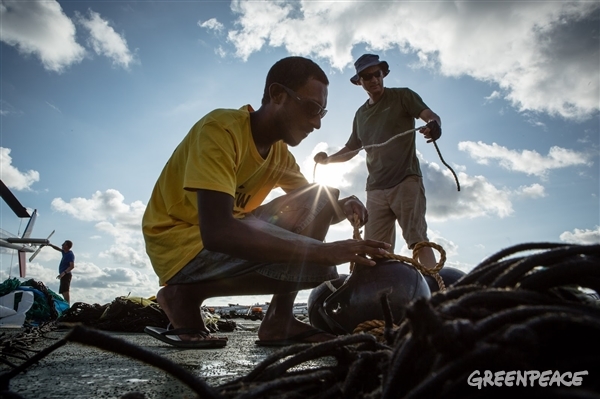
Frank and I dismantling FADs.
The tuna industry uses fish aggregating devices or FADs, floating rafts of death that attract all kinds of sea life. The tuna boats scoop up the lot in massive purse seine nets – catching and killing, among other things, baby tuna, sharks and sea turtles.
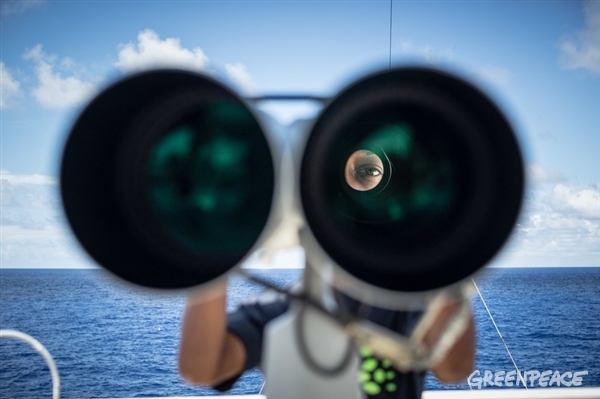
Looking through binoculars during my FAD watch on the ship’s monkey island. The ship’s monkey island is the highest platform of the Greenpeace ship Esperanza, where watchers scan the ocean from sunrise to sunset.
By the way, you can also part of the fight against Thai Union, by signing the petition now and then sharing this petition on Facebook and Twitter.

